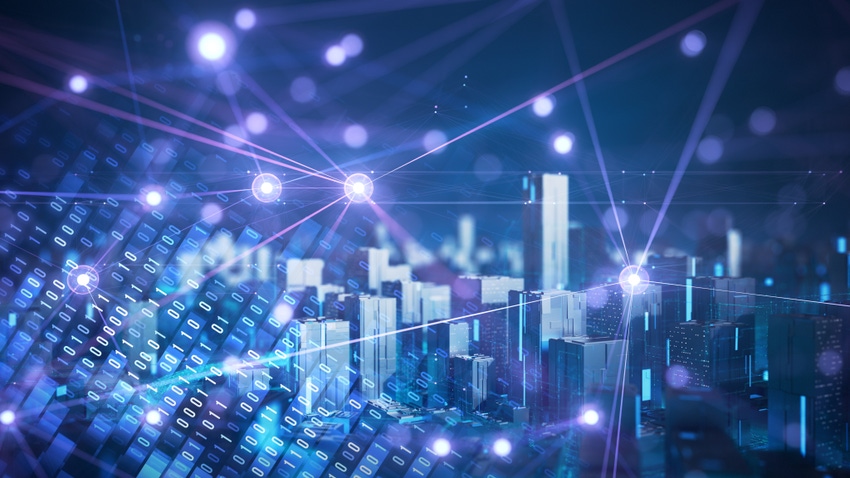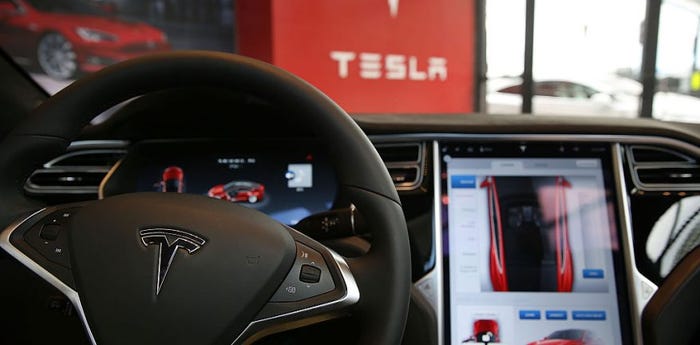Transforming Smart Cities Into Brilliant, Connected Hubs
How do we define what true brilliance looks like in cities and what are the building blocks to achieve the next level of true sustainability?

Alarmingly, 40% of today's carbon dioxide emissions come from buildings. As the net-zero journey advances, smart city planning has evolved to become an international phenomenon, with markers for success driven by sustainable development measures like the widespread adoption of electric vehicles and energy-efficient building technology.
While a “smart city” is what the world strives to achieve for the future of sustainability, there are still breakthroughs yet to be made and it’s fair to say that in today’s fast-paced digital world, cities can push the boundaries of sustainable innovations.
To remain on track with ambitious climate goals such as The Paris Agreement and the Biden-Harris Administration’s Federal Building Performance Standard while embracing a forward-thinking approach to decarbonization, investment in climate-resilient infrastructure must be a prime focus in any smart city development. Also essential for this infrastructure are both physical hardware and digital infrastructure to support electricity supply and demand.
With the rapid advancement of smart grid technology and the proliferation of IoT, cities have the potential to become brilliant.
The question is: How do we define what true brilliance looks like in cities and what are the building blocks to achieve the next level of true sustainability?
The Power of Connectivity
The transition from smart to brilliant cities first requires building owners to reimagine how their structures operate and interact, shifting to a more IoT-focused approach. Cities are more digitally connected than ever before, and collaborative IoT solutions enable structures to maximize operational efficiency, minimize energy waste and cut spending.
Taking it one step further, IoT systems can enable connected buildings — and the connected devices within those builds — to communicate with other systems, the city grid and even the energy-generating potential of nearby structures to turn the city into a hub of brilliant, intelligent communication.
Additionally, the emergence of new IoT-backed innovations like smart grid technology allows cities to take operations to the next level. Creating a solid building-to-grid landscape enables cities to support the grid while simultaneously future-proofing structures to be more connected and energy-resilient.
Building Grids of the Future
Tapping into the potential of smart grid technology will serve as another key tool in unlocking brilliance in cities.
Rapidly proliferating DERs (distributed energy resources) like solar PV, wind turbines, and energy storage systems often owned by prosumers (residential customers who now contribute energy and reduce demand on the grid) and businesses have taken the energy landscape by storm, impacting all aspects of the electrical grid. DER integration not only supports grid stability and resilience but a cleaner energy transition as well.
However, DERs can present significant challenges and disrupt utility operations if the grid is not well equipped to facilitate the distribution or transmission of electricity in the face of frequency and voltage challenges in the new energy landscape. Today, we have an opportunity to provide proper DER management with sophisticated digital control systems to create virtual power plants (VPPs), which can aggregate and optimize DERs.
VPPs are an aggregation of DERs that enable the grid to offer a stable and reliable energy supply by balancing supply and demand in real time while simultaneously optimizing each asset’s performance. With the rise of DERs, VPPs will play a crucial role in supporting grid resilience.
As a cleaner alternative to fossil fuel-based peaker power plants, VPPs can reduce or eliminate the need to turn on peaker power plants during high-demand periods, thus lowering carbon emissions and contributing to a more sustainable energy system.
Also, VPPs can provide value even in the event of a power outage caused by extreme weather, which can heavily strain the grid. While microgrids, also comprised of DERs, can provide localized power to critical facilities like hospitals and emergency centers, VPPs can provide additional capacity to those still connected to the larger grid and help prevent outages by lowering demand.
Load generation forecasting can also be improved through the utilization of VPPs. Considering factors such as weather patterns and market conditions, VPPs can predict the generation capacity of connected DERs and provide key data points that enable cities to make quick and informed decisions based on criteria such as cost, carbon output, or location-based congestion.
Through increased flexibility and controllability of DERs, VPPs can revolutionize grid operations and turn buildings and cities into connected, responsive, and energy-efficient contributors to the clean energy transition. Brilliant, in other words.
Merging IoT and Smart Grid Technology
The advancement of IoT plays a key role in VPP implementation, making it more efficient and affordable. Through IoT-backed monitoring and analytics, building owners can effectively identify energy patterns and optimize building operations in correlation to the needs of the grid. For example, during summer and winter months when peak load is at its highest, building owners could leverage DERs such as smart thermostats and water heaters to moderate energy consumption, freeing up capacity to support other parts of the grid. Ultimately, IoT devices support smart grid modernization, providing additional flexibility and scale that benefits utilities, businesses and residents.
Unlocking a New Generation of Brilliant Cities
To truly become brilliant, cities must continue to evolve and lean into the latest technologies. By investing in IoT solutions and smart grid technologies such as DERs and VPPs, cities can improve the reliability, flexibility and sustainability of both the grid and individual buildings. Improved forms of connectivity, powered by IoT, will facilitate the transition from smart cities to brilliant cities—and pave the way to a greener future.
About the Author(s)
You May Also Like
_(1).jpeg?width=100&auto=webp&quality=80&disable=upscale)

_(1).jpeg?width=400&auto=webp&quality=80&disable=upscale)


.png?width=700&auto=webp&quality=80&disable=upscale)
.png?width=700&auto=webp&quality=80&disable=upscale)
.png?width=300&auto=webp&quality=80&disable=upscale)
.png?width=300&auto=webp&quality=80&disable=upscale)
.png?width=300&auto=webp&quality=80&disable=upscale)
